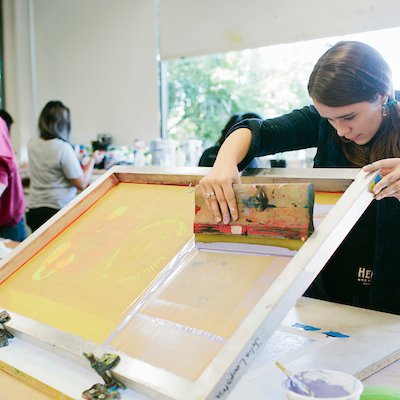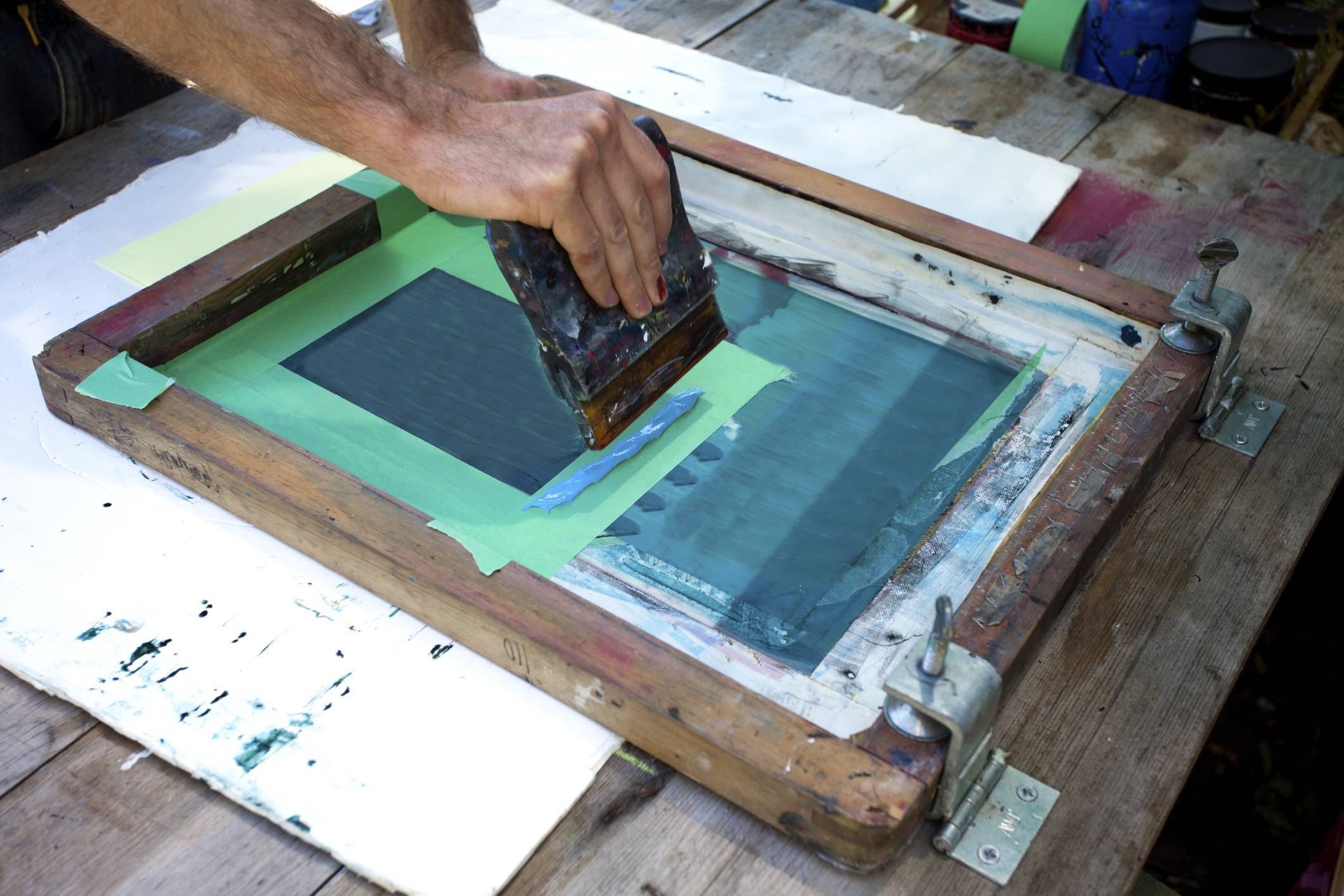The Crucial Overview to Comprehending Screen Printing and Its Versatile Uses
Screen printing has a rich history that dates back to ancient times, evolving into an innovative technique made use of across numerous sectors today. This overview checks out the complexities of the screen printing process, outlining its applications in fashion, home, and marketing design - 10:9 Design near me. Comprehending these principles can open creative capacity for both artistic and commercial tasks. The complying with areas will certainly reveal necessary pointers and methods to enhance one's screen printing ventures
The Background of Screen Printing
Although screen printing has roots that trace back centuries, its evolution mirrors the creative and technological innovations of various cultures. Coming from old China, the strategy was originally made use of for enhancing textiles and later infect Japan, where it ended up being integral to Ukiyo-e woodblock printing. The approach moved to Europe in the 18th century, where it gained popularity amongst craftsmens and business printers. The creation of photo solution in the 20th century revolutionized screen printing, enabling for more detailed layouts and higher effectiveness. Artists like Andy Warhol better pushed its popularity, using the medium to create famous works that mixed commercialism and art. By the late 20th century, screen printing had actually developed itself as a versatile method, utilized in fashion, advertising and marketing, and great art. Today, it remains to advance, integrating digital modern technology and broadening its applications throughout different markets.
The Screen Printing Refine Explained
Screen printing changes creative visions into concrete layouts with a series of precise actions. A picture is produced and after that moved onto a screen, usually made of fine mesh fabric extended over a structure. A light-sensitive solution is applied to the screen, which is revealed to light, setting in locations not covered by the picture. After cleaning out the unhardened solution, a stencil is developed.
Next, the screen is positioned over the substratum, whether it be material, paper, or one more product. Ink is after that pushed via the open locations of the pattern making use of a squeegee, depositing the layout onto the substrate listed below. This procedure can be repeated for numerous shades, requiring separate displays for each color. The published thing is treated making use of warmth to guarantee the ink sticks effectively, resulting in a durable, vibrant design ready for usage.
Kinds Of Screen Printing Techniques

In addition, specialized strategies, such as discharge screen printing, eliminate color from the material to create softer prints, while aluminum foil screen printing uses metal aluminum foil to accomplish a shiny coating (10:9 Design Screen Printing Texas). Each method supplies distinctive attributes, accommodating numerous innovative requirements and manufacturing scales, inevitably increasing the possibilities within the screen printing domain name
Applications of Screen Printing in Different Industries

Additionally, the signs and advertising markets make use of screen printing for producing captivating screens and banners. This approach permits strong shades and detailed designs that record attention. In electronics, screen printing is employed for using conductive inks to circuit boards, important for part links. Moreover, the home decoration market welcomes screen printing to create distinctive designs on textiles and wall surface art. Generally, screen printing works as a critical device across diverse areas, improving products with customized and aesthetically attractive graphics.
Tips for Effective Screen Printing Projects
While undertaking a screen printing job, mindful attention to detail can considerably enhance the last result. Picking top notch products is crucial; this includes the screen, inks, and substratums. Using appropriate mesh matters can affect ink deposition and information resolution. Prep work is just as vital; complete cleaning of displays and appropriate exposure times guarantee crisp prints.
Next off, exact informative post enrollment is critical for multi-color prints. Using positioning devices can aid achieve exact layering. In addition, screening prints on scrap materials before manufacturing assists identify prospective problems without wasting resources.

Often Asked Concerns
What Products Are Ideal for Screen Printing on Material?
Cotton and polyester blends are ideal for screen printing on material due to their toughness and ink absorption. In addition, specialized materials like silk or canvas can produce special textures and coatings, enhancing the general layout high quality.
How Do I Tidy and Maintain Screen Printing Devices?
To preserve and cleanse screen printing tools, one need to on a regular basis wash displays with proper solvents, check mops for wear, lubricate moving components, and store all things in a completely dry, dust-free environment to extend their life-span.
What Are the Environmental Impacts of Screen Printing?
Screen printing can have considerable environmental effects, including chemical waste from solvents and inks, water usage during cleaning processes, and power intake. Environment-friendly materials and lasting techniques are necessary for decreasing these negative effects.
Can Screen Printing Be Done at Home Properly?
Screen printing can be effectively done at home with the right products and strategies. Hobbyists can create high quality prints, though success relies on their ability degree, equipment, and understanding of the procedure entailed.
What Are the Prices Connected With Starting a Screen Printing Service?

Starting a screen printing organization involves prices for equipment, products, and workspace. Preliminary expenses typically vary from a few hundred to a number of thousand bucks, relying on the scale, high quality of equipment, and desired production capability.
Screen printing has a rich history that dates back to old times, progressing into an innovative technique made use of throughout numerous markets today. Another method, rotary screen printing, utilizes round screens, promoting continual printing on material rolls, thus improving efficiency for large-scale official site manufacturings. Additionally, specialized techniques, such as discharge screen printing, remove dye from the textile to create softer prints, while aluminum foil screen printing uses metal aluminum foil to accomplish a shiny finish. In the style field, screen printing is extensively utilized to produce lively layouts on garments, enabling brands to display their unique designs. Cotton and polyester blends are optimal for screen printing on material due to their longevity and ink absorption.